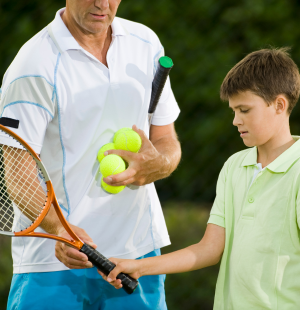
Private vs Group Lessons
🎾 Which Is Right for Your Child’s Tennis Development?
As your child begins learning and growing in tennis, you may wonder which setting will serve them best: private lessons, group lessons, or a combination of both.
At FOFTA, we believe both formats offer distinct benefits, and the right choice often depends on your child’s age, personality, skill level, goals, and even their stage of development. Here’s a guide to help you understand the pros and cons of each, and how to find the right balance.
👤 Private Lessons: Personalized Progress
Private lessons offer one-on-one time with a coach, allowing for highly focused and individualized instruction. This setting is ideal for addressing specific needs or accelerating improvement in targeted areas.
Benefits of private lessons:
- Personalized attention to technique, footwork, or tactics
- Customized pace based on your child’s learning style
- Immediate correction and detailed feedback
- Strong relationship-building between the coach and the player
- Great for fine-tuning specific strokes or preparing for competition
When private lessons are most effective:
- Your child is learning or adjusting technical fundamentals
- They need confidence boosts in a one-on-one setting
- They’re preparing for tournaments or have advanced goals
- They’re working through a specific challenge (mental, physical, or technical)
📌 Parent Tip: Private lessons are most productive when your child is engaged, focused, and open to coaching.

🤝 Group Lessons: Learning with Peers
Group lessons involve 3 to 8 players of similar ability training together under the guidance of one or more coaches. These sessions create a dynamic, social, and competitive environment that mimics real match play.
Benefits of group lessons:
- Develops rally and point-play skills in realistic settings
- Teaches sportsmanship, cooperation, and match etiquette
- Builds competitive instincts and game awareness
- Motivates players through peer interaction and friendly challenges
- Often more cost-effective than private lessons
When group lessons are most effective:
- Your child is ready for more rallying, live-ball drills, or point construction
- They enjoy social learning and thrive with peers
- They’re transitioning to more competitive play
- They need exposure to different styles of play
📌 Parent Tip: Group lessons are great for developing strategic awareness, adapting to different opponents, and building stamina and focus over longer periods.
⚖️ The Ideal Balance: A Hybrid Approach
Most players benefit from a combination of private and group lessons, especially as they progress through the Red, Orange, Green, and Yellow (ROGY) stages of development.
A good training plan might include:
- 1 private lesson/week for technical refinement and personal feedback
- 1–2 group sessions/week for footwork, competition, and repetition under pressure
Optional: fitness training or match play days to round out development
This hybrid approach allows players to build solid fundamentals while learning to apply their skills in live situations.
🧭 What to Consider When Choosing
Ask yourself:
- Is my child more focused in 1-on-1 settings or energized by group dynamics?
- Do they need to refine a specific skill or develop their overall game awareness?
- What’s our long-term goal: general improvement, tournament prep, or team play?
Talk to your coach. They can guide you in creating a schedule that fits your child’s needs, personality, and growth pace.
At FOFTA, we design training around the individual, not just the format. Whether your child thrives in focused solo sessions or learns best by playing with peers, we’ll help them grow in all four pillars of the game: technical, physical, strategic, and mental.
“Private lessons build the player. Group lessons test the player. Together, they shape a complete competitor.”
